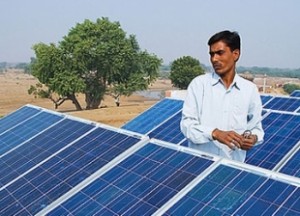List of 3 best Solar Stocks to buy in 2016
April 18, 2016Sunrun – Should continue to run ahead as USA solar market grows strongly
April 20, 2016We at Greenworldinvestor have been the largest proponent of Solar Energy especially in India. The country has set up ambitious target of achieving 100 GW of solar installations by 2022 and was successful in installing 3GW in (April 2015- March 2016). It is expected to install another 7 GW by 2017. Solar is a clean form of energy, abundant and cheap. According to GTM research, global solar installations are expected to increase to 135 GW by 2020. Energy storage is also set to gain more traction, as solar energy reaches a mature phase. Important government policies and incentives are required to promote solar eg. USA renewed its Investment Tax Credit (ITC) norms in December 2015 to encourage solar adoption. While there is no doubt that solar energy is poised to become the largest and cleanest form of energy, today I analyse few factors that could delay the above scenario.
List of 4 major factors that could limit Solar Energy Growth in India
1) Global Slowdown – Solar is highly capital-intensive in nature and requires large amounts of funds for development. The Modi government in India has being putting in all the efforts required to attract foreign investment in India. The country’s “Ease of doing business” rankings also improved in the last year. However if the world at large goes into recession, India might face a cut down in these foreign funds, leading to a slow progress of solar installation in the country. While Europe and Japan do not look in their best forms, China too is facing difficult times. This could lead to fall in fossil fuel prices or a depreciation in currencies, leading to a disruption of the solar ecosystem.
2) Grid Issues – Though it is true that solar energy has the potential to grow by leaps and bounds, an important question for India is its grid preparedness for the same. The grid needs to be prepared in a way to handle the extra power demand that would arise from using solar power, otherwise there would be a situation of grid instability. Till the storage technologies are developed and become cost efficient, solar power can be used only during the day time, thus leading to more reliance on the grid when the night falls. The utilities really need to work hard to develop a grid that is more stable to handle the load.
3) Increased adoption of other carbon-efficient energy forms – The world at large is now more aware of using cleaner and greener sources of energy. Fossil fuels like coal and oil has been severely punished, especially in the west, for their dirty nature and causing a lot of pollution. Now people are more educated to use better energy efficient forms of energy. Any rise in alternate and carbon-efficient energy options like clean coal might adversely effect the growth and adoption of solar power.
Read about Coal Tax in India.
4) Delay in development of Storage technologies – A lot of solar’s potential for mass adoption depends on the development solar storage technology. More and more solar companies have realised the importance of storage technology and are already offering integrated energy storage with solar systems. However, the main challenge for this technology is its cost. Though the costs are declining, there is still scope left for further reductions. It is expected that approximately $300-350/kWh could be achievable around 2020 for li-ion batteries.
Though we cannot be critical of the efforts put in by the Modi Government in promoting solar adoption, it is true that the country still has a long way to go before it achieves its goal. Stated above are the major concerns that could limit the growth of solar installation in India. The most important factor in my view that the government should consider at hand is developing the grid to be more resilient.

